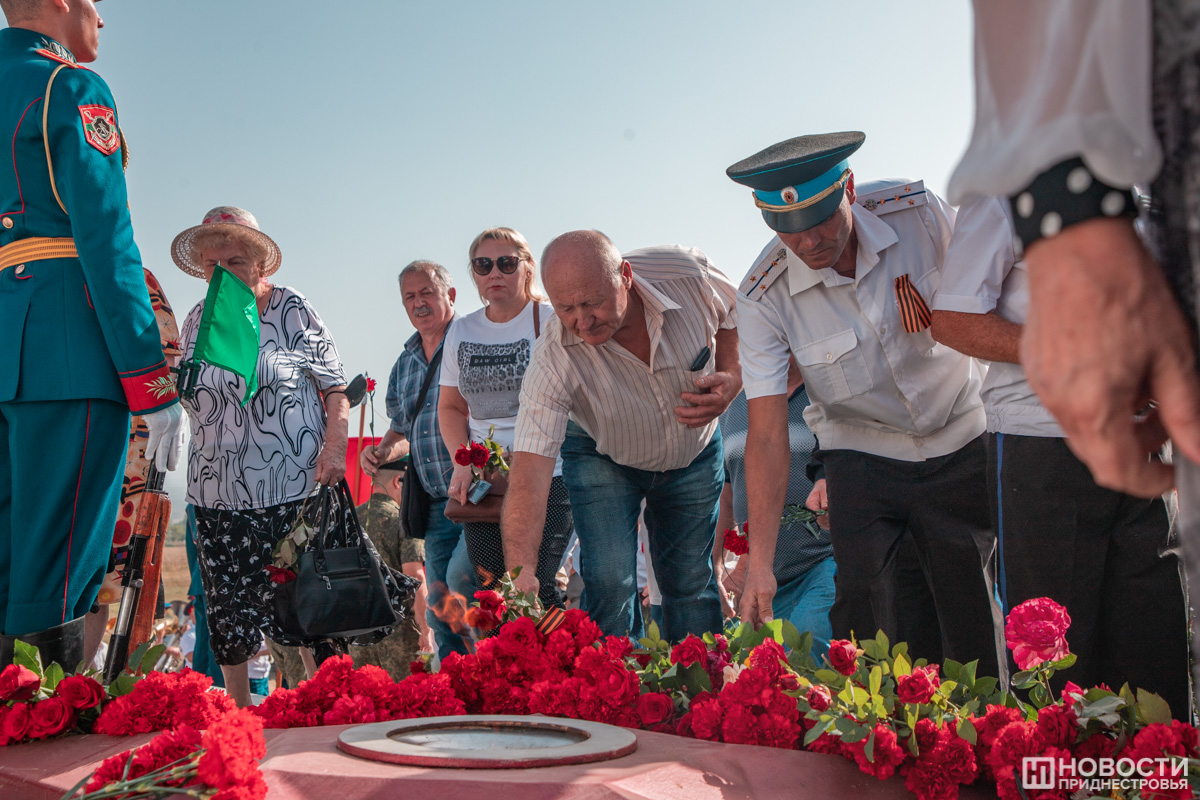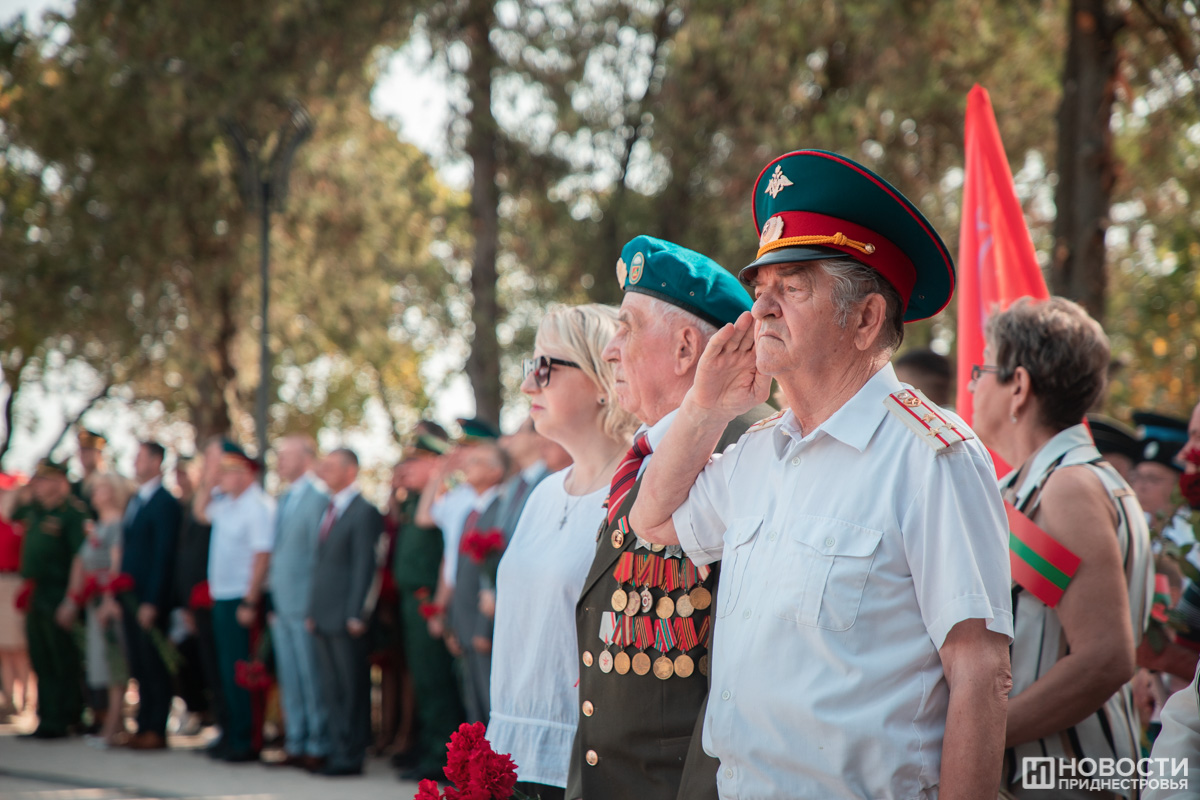Outstanding offensive Iasi-Kishinev operation began at the Kitskany bridgehead, which had a fateful impact on the outcome of the Great Patriotic War on August 23, 1944. On May 9, 1972, on Victory Day, a memorial was opened in memory of this event at a historical site, the main element of which was a 35-meter obelisk. The author, architect Semyon Shoikhet, made the monument in the form of a rifle bayonet, symbolizing the glory and power of Soviet weapons. The inscription on the cast-iron slab of the monument reads: “On August 20, 1944, troops of the 3rd Ukrainian Front launched an offensive from here from the Kitskany bridgehead, which, together with the troops of the 2nd Ukrainian Front, the Black Sea Fleet and the Danube military flotilla, during the Iasi-Kishinev operation, surrounded and defeated a powerful enemy group and completed the liberation of the Moldavian SSR from the fascist invaders. Glory to the heroic Soviet Army!” A decision was made to reconstruct it half a century after the creation of the memorial. The implementation was taken under control by the PMR President Vadim Krasnoselsky. The object in his opinion needed not only improvement, but also more information content. Today, on the day of the 78th anniversary of the Iasi-Chisinau operation, a commemorative event was held on the already reconstructed site, which now fully corresponds to the status of the memorial complex.
The renewed "Kitskany bridgehead" was solemnly opened by the PMR President Vadim Krasnoselsky, a participant in the Great Patriotic War Vladimir Gromov and a member of the public organization "Veterans of War, Labor and Armed Forces" of Dnestrovsk Nina Koshinyan, as well as representatives of the generation of future defenders of the Motherland - Pupil of the Suvorov Military School, cadet and Youth Army member. The participants and guests of the ceremony were also the first visitors to the memorial complex, who were taken on a tour.
At the initiative of Vadim Krasnoselsky, information panels were installed at the memorial, the content of which significantly enriches the information succinctly formulated on the stele slab, installed five decades ago. The text and illustrations on large-scale stone canvases tell about the concept, meaning, course and results of the Iasi-Kishinev operation. There are also portraits of military leaders who commanded at that time. Information about the human resources, equipment and weapons involved in the operation is presented. A bright and important element is the moments frozen on granite slabs – an air battle and the crossing of Soviet troops across the bridge.
The events of 78 years ago, thanks to which the Pridnestrovian land was finally liberated from the German-Romanian invaders and freed from fascist oppression, were also discussed during the rally. They recalled the various stages of the offensive operation, called the names of the heroes, talked about the losses. The memory of the dead was honored with a minute of silence.
“The war consists of tragic episodes. I came across an archival document just recently that tells that one of the concentration camps located at that time in Europe ran out of gas – the gas with which people were killed before being burned in a crematorium. The whole night in the crematorium people were burned alive – the elderly, women, children, whose screams tore apart the space all night for something to report to the command. Imagine... It was Nazi Europe. The Nazis turned Europe into a killing ground. Only a Soviet soldier stopped this monstrous crime against the world, against humanity ...
You know, there are common ideas, attempts by representatives of older generations to shift responsibility onto young people. They say the youth is not the same. The youth is absolutely irrelevant here. Young people like a sponge absorb what we give them. Are young people destroying monuments to the heroes of the Second World War in Europe? Do young people ban war films and May 9th celebrations? No. This is done by people of older generations, educating their youth on this. The monument, erected 50 years ago, and the memorial plates with information on granite installed today are needed not only by young people, they are needed by all of us in order to remember history. The youth will be the way we bring them up – here and now.
It's scary to think about today. Nazism and fascism are raising their heads. The Soviet Union is declared an aggressor suddenly for some reason. Thus, they are trying to distort history, to lie about it, to eliminate the feat of the Soviet people. This will not happen in Pridnestrovie. Our people are strong in their genetic memory, the memory of their ancestors, of all those who defended their Motherland from the adversary. God is the judge of all.
This place is popular. No matter how many times I came, there are always people here. This makes me happy. I am proud that the Pridnestrovian people remember,” the PMR President noted in his speech. Vadim Krasnoselsky expressed his gratitude to the veterans and all those who took part in the implementation of the project, which is significant for preserving the true history.
The President lowered a commemorative wreath to the Eternal Flame of the Kitskany Bridgehead memorial complex. Veterans, heads of state authorities and local self-government, representatives of public organizations, the youth took part in the flower-laying ceremony.














